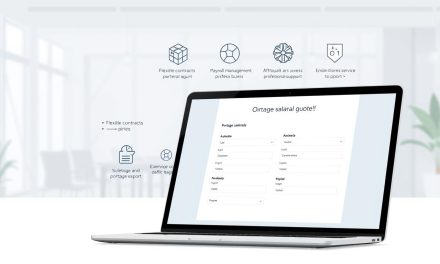Remember that moment when you first decided to work for yourself? The excitement of freedom quickly collides with a harsh reality: no clients, no business. For many independent professionals, those early days feel like shouting into an empty canyon – your skills echo back unanswered, and doubts creep in about whether you’ll ever build meaningful momentum.
Here’s what seasoned experts know: client acquisition is a science, not luck. Whether you design websites, write code, or translate documents, the principles for attracting the right opportunities remain consistent. We’ve distilled years of proven methods into actionable steps that transform uncertainty into strategy.
This guide focuses on what truly matters – positioning your unique value in ways that resonate with decision-makers. You’ll learn how to bypass crowded job boards and create authentic connections that lead to recurring projects. Forget generic advice; we prioritize techniques that deliver measurable results for creative professionals and technical specialists alike.
Table of Contents
Key Takeaways
- Strategic positioning turns skills into client magnets
- Modern digital outreach complements traditional networking
- Clear value propositions accelerate trust-building
- Client relationships thrive on consistent communication
- Income stability grows through diversified outreach
Our approach blends time-tested conseils from industry leaders with fresh insights about today’s hybrid work landscape. You’ll discover how to showcase your expertise without sounding salesy, and why focusing on client outcomes – rather than just deliverables – creates lasting partnerships.
Understanding the Freelance Landscape
Over 1 million professionals in France now operate as independent workers, reshaping how businesses access specialized skills. This shift creates both challenges and advantages for those ready to adapt their strategies.
Industry Trends and Market Insights
The global domaine of independent work grows 15% annually, with tech and creative sectors leading demand. Traditional entreprises now allocate 28% of project budgets to external specialists, according to recent market studies.
Three factors define success today:
- Monitoring sector-specific pricing fluctuations
- Identifying underserved niches in your expertise area
- Aligning services with emerging technologies
Defining the Modern Freelance Environment
Today’s activité landscape rewards those who combine technical skills with business acumen. While competition intensifies, strategic professionals thrive by focusing on high-value services that corporate teams can’t easily replicate.
Effective positioning requires understanding your unique role in the marché. For instance, marketing specialists might partner with agencies, while IT consultants often work directly with enterprise clients. Adaptation strategies become crucial when market conditions shift unexpectedly.
Key indicators of market health include:
- Consistent project inquiries from quality leads
- Competitive yet sustainable rate structures
- Growing demand for hybrid service models
Identifying Your Ideal Client Profile

Specialization isn’t just a strategy—it’s your compass in a crowded market. Before launching services or refining sales pitches, successful professionals map their client idéal with surgical precision. This blueprint determines where you invest energy and how you articulate value.
Start by auditing your compétences through a market lens. What technical abilities or industry insights make your offering irreplaceable? For instance, a web developer might focus on e-commerce platforms for sustainable brands rather than general site building.
| Criteria | Generic Approach | Specialized Strategy |
|---|---|---|
| Target Industry | Multiple sectors | Niche verticals |
| Service Scope | Broad offerings | Tailored solutions |
| Client Retention | Transactional | Partnership-focused |
Validate your cible through direct conversations with prospects. Ask about budget cycles, decision-making hierarchies, and pain points competitors overlook. This data transforms assumptions into actionable intelligence.
Our methodology helps you secure recurring projects by aligning services with specific operational gaps. One marketing consultant increased conversions 300% by focusing solely on SaaS companies needing multilingual campaigns.
Remember: Your client idéal evolves as markets shift. Quarterly reviews of client feedback and project patterns keep your positioning razor-sharp. This discipline separates thriving practitioners from those chasing random opportunities.
Building and Optimizing Your Portfolio
Your portfolio acts as your professional signature in a world where first impressions dictate opportunities. Unlike static resumes, it demonstrates expertise through action rather than claims. Focus on clarity and impact – every element should answer one question: « Why should they choose me? »
Showcasing Your Best Work
Select 5-7 projects that highlight problem-solving abilities. For each piece, create a case study explaining:
- Specific challenges addressed
- Your tailored approach
- Measurable outcomes achieved
No client history? Develop création samples targeting your ideal market. A graphic designer might redesign popular app interfaces, while writers could craft sample campaign copy.
Choosing the Right Portfolio Platforms
Your site web offers full control but requires maintenance. Third-party platforms provide visibility but limit customization. Consider this comparison:
| Platform Type | Best For | Considerations |
|---|---|---|
| Personal Website | Full brand alignment | Requires SEO knowledge |
| Behance/Dribbble | Visual industries | High competition |
| LinkedIn Articles | Thought leadership | Integrated networking |
Platforms like portfolio essentials guides recommend combining one primary and one secondary medium. Update quarterly with new skills or testimonials to optimiser profil effectiveness.
Leveraging Social Media for Client Attraction

Imagine having direct access to decision-makers actively seeking your expertise. Platforms like LinkedIn and Instagram transform this possibility into reality when used strategically. The key lies in intentional engagement rather than random posting.
Effective Engagement Strategies
Begin by mapping your audience’s digital habitats. Professionals in tech often cluster on LinkedIn and Twitter, while creative industries thrive on Instagram and Behance. Our social media guide reveals how to identify high-value conversations in your niche.
Three principles drive meaningful connections:
- Share actionable insights that solve specific problems
- Respond thoughtfully to industry discussions
- Collaborate with complementary service providers
Content Optimization Tactics
Transform profiles into conversion tools. Use header spaces to state outcomes you deliver, not just services offered. For example: « Helping e-commerce brands increase checkout conversions through UX audits » outperforms generic « Freelance designer available ».
Analyze top-performing posts weekly. Notice patterns in format (videos vs carousels), timing, and messaging. Tools like Hootsuite or Buffer simplify tracking without overwhelming users. This data-driven approach ensures your contenu remains aligned with audience preferences.
Balance promotional material with educational resources. A 4:1 ratio of value-driven posts to service announcements maintains trust while keeping opportunities visible. Testimonials and project breakdowns work particularly well for demonstrating expertise authentically.
Utilizing Freelance Job Platforms
Think of online marketplaces as training wheels for your independent career – temporary supports that help you gain momentum while building essential skills. While seasoned professionals often debate their value, these plateformes offer structured environments to test pricing models and refine client communication.
Strategic Platform Selection
Not all sites serve the same purpose. Specialized hubs like Toptal cater to elite developers, while general marketplaces attract diverse missions. Analyze three factors before committing:
- Fee structures impacting your profitability
- Client quality and project budgets
- Review systems that validate expertise
We recommend starting with niche plateformes aligned with your specialization. A translator focusing on legal documents might prioritize ProZ.com over broader sites. This targeted approach builds credibility faster through relevant services showcases.
Profile optimization separates thriving freelances from overlooked profiles. Highlight outcomes rather than tasks: « Increased mobile app retention by 40% through UX redesign » demonstrates impact better than listing software skills. Pair this with strategic proposal writing that addresses specific pain points mentioned in project briefs.
As your reputation grows, gradually shift toward direct collaborations. Many successful independents use these marketplaces for finding specialized talent before establishing long-term partnerships. This phased approach maintains income stability while expanding your professional network.
Mastering Cold Email Outreach
What separates impactful prospection from digital noise? Precision. Unlike generic blasts, strategic email campaigns create bridges between your expertise and unmet needs. This approach transforms cold contact into warm conversations that drive decisions.
Crafting Personalized Messages
Begin with detective-level research. Study the recipient’s recent achievements, industry challenges, or content they’ve shared. A developer might reference a company’s new app launch: « Your team’s innovation in payment integrations caught my attention… » This groundwork builds relevance before mentioning services.
Structure emails around three pillars:
- Specific observation about their business
- Concise value proposition aligned with their goals
- Open-ended question inviting dialogue
Subject lines act as gatekeepers. Test combinations like « [Their Project Name] + Opportunity » or « 3 Insights for [Specific Challenge] ». These formats spark curiosity while demonstrating preparation.
Techniques for Effective Follow-Up
Timing transforms persistence into professionalism. Send initial follow-ups 5-7 days after the first email, adding new context each time. Share a relevant case study or industry report with a note: « This made me think of our previous discussion about… »
Track responses using simple spreadsheets or CRM tools. Note patterns in:
| Metric | Optimization Tip |
|---|---|
| Open Rates | Test send times across time zones |
| Reply Rates | Refine value propositions |
| Meeting Conversions | Adjust call-to-action clarity |
For sustained success, integrate these methods with broader strategies to develop a client portfolio. Remember: Every unanswered contact attempt teaches you how to better serve your next prospect.
Harnessing Networking and Referral Opportunities
Quality connections often yield better results than aggressive marketing. When you prioritize authentic relationships, your réseau becomes a living ecosystem that fuels growth. Start by sharing your activité updates with former colleagues and peers – many opportunities emerge from unexpected sources.
Building and Nurturing Professional Relationships
Effective networking focuses on mutual benefit. Offer insights to autres freelances facing challenges in your field. This generosity often circles back as referrals or collaborations. Attend industry meetups with clear intentions: connect with 3-5 professionals who align with your expertise.
| Approach | Transactional | Relationship-Focused |
|---|---|---|
| Communication | Service pitches | Problem-solving discussions |
| Follow-Up | Only when needing work | Regular value-sharing |
| Long-Term Result | One-time projects | Recurring partnerships |
Strengthen your réseau through strategic reciprocity. When you recommend autres freelances for suitable projects, they become allies rather than competitors. Digital communities amplify this effect – share resources in forums where decision-makers seek solutions.
Track relationship health with simple metrics:
- Monthly meaningful conversations
- Referrals given vs received
- Collaboration opportunities created
These practices help sustain your réseau grâce to consistent engagement. Remember: Trust-building accelerates when you focus on others’ success before your own.
Effective Use of Digital Advertising
Digital ads act as precision tools for professionals seeking quality leads. When aligned with strategic goals, paid campaigns transform casual viewers into engaged contacts. The key lies in balancing audience targeting with creative execution.
Social Media and Local Ad Strategies
Platform selection determines campaign success. Focus your marketing efforts where decision-makers spend time – LinkedIn for B2B services, Instagram for visual industries. Localized ads add geographical relevance, perfect for region-specific prospects.
Three elements make ads convert:
- Clear calls-to-action aligned with your stratégie
- Mobile-optimized designs loading in under 3 seconds
- A/B tested headlines addressing specific pain points
Track performance through web analytics tools. Adjust budgets weekly based on click-through rates and lead quality. Remember: Effective campaigns evolve through data, not guesswork.
Pair paid efforts with organic content to reinforce credibility. A cohesive stratégie blends promotional posts with educational material, building trust across multiple touchpoints. This approach turns temporary visibility into lasting professional relationships.
FAQ
How do I define my ideal client profile?
Start by analyzing past projects where collaboration felt seamless. Identify industries, company sizes, and decision-maker roles that align with your expertise. Use platforms like LinkedIn to research pain points in your target market and tailor your messaging accordingly.
Which platforms work best for showcasing creative work?
Behance and Dribbble excel for visual fields like design, while GitHub suits developers. For writing or consulting, create a professional website using Squarespace or WordPress. Always include case studies demonstrating measurable results.
What social media strategies drive quality leads?
Focus on LinkedIn for B2B connections through thought leadership posts and industry groups. Use Instagram Reels or YouTube Shorts to share quick tips if targeting consumers. Engage consistently by commenting on posts from potential clients’ accounts.
How effective are cold emails for securing projects?
Personalized outreach outperforms generic templates by 35%. Reference specific challenges from the prospect’s website or recent news. Tools like Hunter.io help find verified emails, while FollowUpThen ensures timely reminders without appearing pushy.
Which job platforms suit specialized professionals?
Toptal and Upwork Premium cater to high-end tech and creative talent. For niche fields like medical writing, explore ProBlogger or Contena. Always check platform fees and client review systems before committing.
How can Google Ads complement organic outreach?
Run targeted campaigns for service keywords like “e-commerce UX consultant” rather than broad terms. Use location targeting for local clients and remarketing ads to re-engage website visitors. Track conversions through dedicated landing pages.





